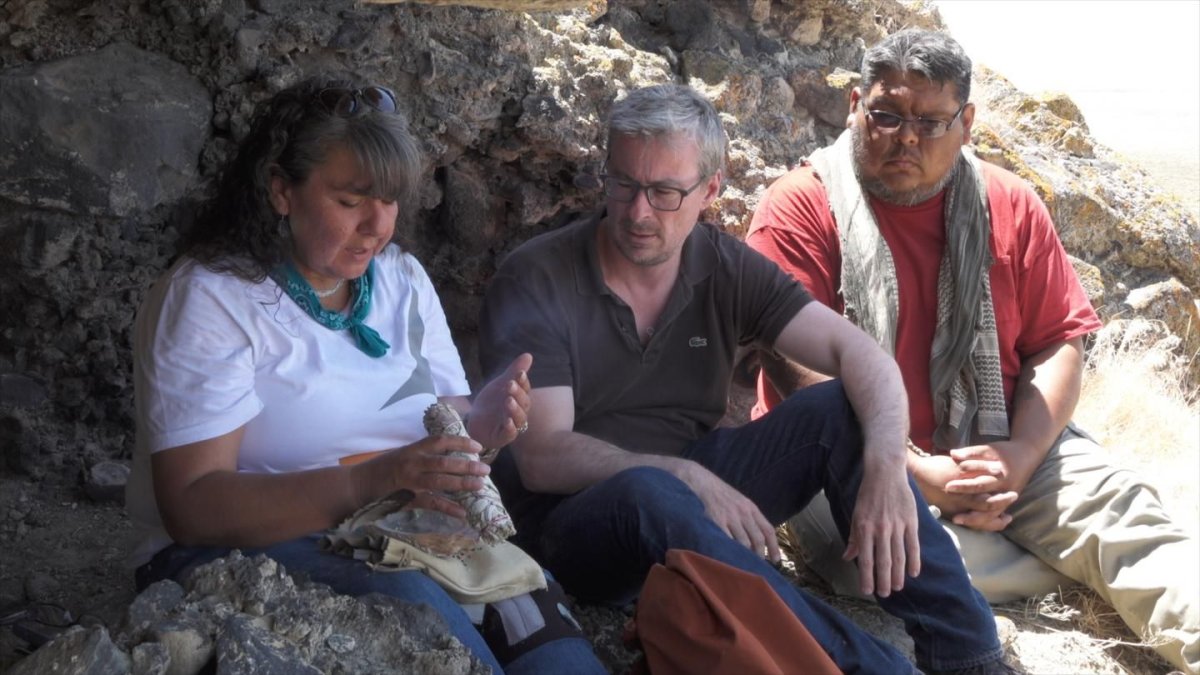A wide-ranging study in which researchers genetically analyzed the DNA of famous and controversial human remains from across North and South America has revealed fascinating new details about the ancient history of the vast region, as well as settling a long-running legal battle over a 10,600-year-old skeleton that is the world's oldest natural mummy.
In the study, published in the journal Science, an international team of researchers sequenced 15 prehistoric genomes—essentially, the complete set of genes present in an organism—extracted from remains found in locations as far apart as Alaska and Patagonia. These included, the Lovelock skeletons, the Lagoa Santa remains, an Inca mummy and the oldest remains in Chilean Patagonia, as well as the 10,600-year-old skeleton—known as the "Spirit Cave mummy."
"Throughout the last three decades many methodological advancements have been made which have facilitated the retrieval of ancient DNA from human remains," José Victor Moreno Mayar, first author of the study from the Centre for GeoGenetics at the University of Copenhagen, told Newsweek. "Today we are able to get DNA from remains that have been deposited, for thousands of years, in settings that make DNA preservation unlikely."
These techniques enabled the researchers to track the movements of the earliest humans in the Americas, revealing both how they spread across the region at "astonishing" speed during the Ice Age, and how they interacted with each other in the following millennia.
"Today, we know some things about the peopling of the Americas from different disciplines like archaeology, anthropology, linguistics and genetics," Mayar said. "However, those things that we know are only enough to build a very simplistic model for how things happened.
"Such model states that the first Native Americans travelled from Asia into Alaska at some point after 25,000 years ago and once they moved into mid-latitude America, they followed a north to south route with some populations staying behind at different locations at different times; after that, it seems that established populations did not interact much with one another," he said.
However, there are indications that suggest the story is far more complex, with long periods of population isolation in some places, and constant population interaction in some others.

"Genetics is a good way to characterize these processes," Mayar said. "However, the genomes of present-day Native Americans are only a subset of those present during initial settlement. Thus, we decided to look at the genomes of individuals that lived shortly after Native Americans were initially settling the Americas."
Significantly, the results enabled the team to dismiss a long-standing hypothesis that a group of genetically distinct humans, called Paleoamericans, existed in North America before Native Americans.
"Spirit Cave and Lagoa Santa were very controversial because they were identified as so-called 'Paleoamericans' based on craniometry—it was determined that the shape of their skulls was different to current day Native Americans," Eske Willeslev, leader of the study who holds positions both at St John's College, University of Cambridge, and the University of Copenhagen, said in a statement.
"Our study proves that Spirit Cave and Lagoa Santa were actually genetically closer to contemporary Native Americans than to any other ancient or contemporary group sequenced to date."
The 10,400-year-old Lagoa Santa remains—located in the Brazilian state of Minas Gerais—were discovered by Danish explorer Peter W. Lund in the 19th century. The findings led him to develop the "Paleoamerican hypothesis", which suggested that the famous collection of skeletons could not be Native Americans, due to the particular shape of their skulls—something the latest study refutes.
"Looking at the bumps and shapes of a head does not help you understand the true genetic ancestry of a population—we have proved that you can have people who look very different but are closely related," Willeslev said.
The latest study also marks an important chapter in the history of the Spirit Cave mummy—a prehistoric man who died in his forties and was preserved naturally. Discovered in 1940 in the Great Basin Desert, its significance was not properly understood for 50 years. The remains were initially thought to be between 1,500 and 2,000 years old, but during the 1990s, new textile and hair testing dated the bones to 10,600 years old.
In 1997, the Fallon Paiute-Shoshone Tribe—a group of Native Americans based in Nevada near Spirit Cave—requested immediate repatriation of the remains under the Native American Graves Protection and Repatriation Act, claiming they had cultural affiliation with the skeleton.
However, this request was refused because the ancestry of the remains was disputed. In response the tribe sued the federal government, with the lawsuit pitting tribal leaders against anthropologists who argued that the mummy should continue to be displayed in a museum due to its historical value. The case was deadlocked for 20 years until the tribe allowed Willeslev to sequence the genome of the mummy for the first time.
"It was agreed that if Spirit Cave was genetically a Native American, the mummy would be repatriated to the tribe," Willeslev said.

After determining that the Spirit Cave individual was an ancestor of modern Native Americans, the remains were returned to the tribe in 2016 and a private reburial ceremony took place earlier this year—the details of which have just been released.
"What became very clear to me was that this was a deeply emotional and deeply cultural event," Willeslev said. "The tribe have real feelings for Spirit Cave, which as a European it can be hard to understand but for us it would very much be like burying our mother, father, sister or brother. We can all imagine what it would be like if our father or mother was put in an exhibition and they had that same feeling for Spirit Cave."
Not only has the sequencing of the Spirit Cave genome brought the long-running legal dispute to an end, but it has also cast new light on how ancient human populations moved and settled across the Americas. These populations often split up, travelling in smaller isolated groups.
"A striking thing about the analysis of Spirit Cave and Lagoa Santa is their close genetic similarity which implies their ancestral population travelled through the continent at astonishing speed," David Meltzer, from the Department of Anthropology at the Southern Methodist University, Dallas, said in the statement.
"That's something we've suspected due to the archaeological findings, but it's fascinating to have it confirmed by the genetics. These findings imply that the first peoples were highly skilled at moving rapidly across an utterly unfamiliar and empty landscape. They had a whole continent to themselves and they were travelling great distances at breathtaking speed."
The latest research also uncovered surprising traces of Australasian ancestry in the Lagoa Santa remains, indicating that Native South Americans had ancient ties to these people. However, no Australasian genetic link was found in Native North Americans.
"We discovered the Australasian signal was absent in Native Americans prior to the Spirit Cave and Lagoa Santa population split which means groups carrying this genetic signal were either already present in South America when Native Americans reached the region, or Australasian groups arrived later," Mayar said.
"That this signal has not been previously documented in North America implies that an earlier group possessing it had disappeared or a later arriving group passed through North America without leaving any genetic trace."
For Peter de Barros Damgaard, also from the Centre for GeoGenetics, this presents an intriguing puzzle.
"If we assume that the migratory route that brought this Australasian ancestry to South America went through North America, either the carriers of the genetic signal came in as a structured population and went straight to South America where they later mixed with new incoming groups, or they entered later," he said. "At the moment we cannot resolve which of these might be correct."
According to the researchers, the latest findings may force us to rethink our ideas on how the Americas were first settled, suggesting that this process was far more complex than previously thought, as expected.
"We found that before moving south of the ice sheets that covered northern North America during the Ice Age, there were many Native American groups that we hadn't genetically documented before," Mayar said. "Then, once south of the ice, it seems that Native Americans radiated and explored the whole continent very quickly, likely in a matter of centuries."
"However, that was not the end of the story and it appears that starting from 8,000 years ago, there was a second population expansion out of Mesoamerica, which contributed to the ancestry of most present-day South Americans and also some peoples in the U.S. Great Basin," he said.
Mayar noted that we are only scratching the surface in terms of characterizing different population movements at different times. "Our results make it clear that future studies will show further, finer details of this story," he said.
Uncommon Knowledge
Newsweek is committed to challenging conventional wisdom and finding connections in the search for common ground.
Newsweek is committed to challenging conventional wisdom and finding connections in the search for common ground.
About the writer
Aristos is a Newsweek science reporter with the London, U.K., bureau. He reports on science and health topics, including; animal, ... Read more
To read how Newsweek uses AI as a newsroom tool, Click here.








